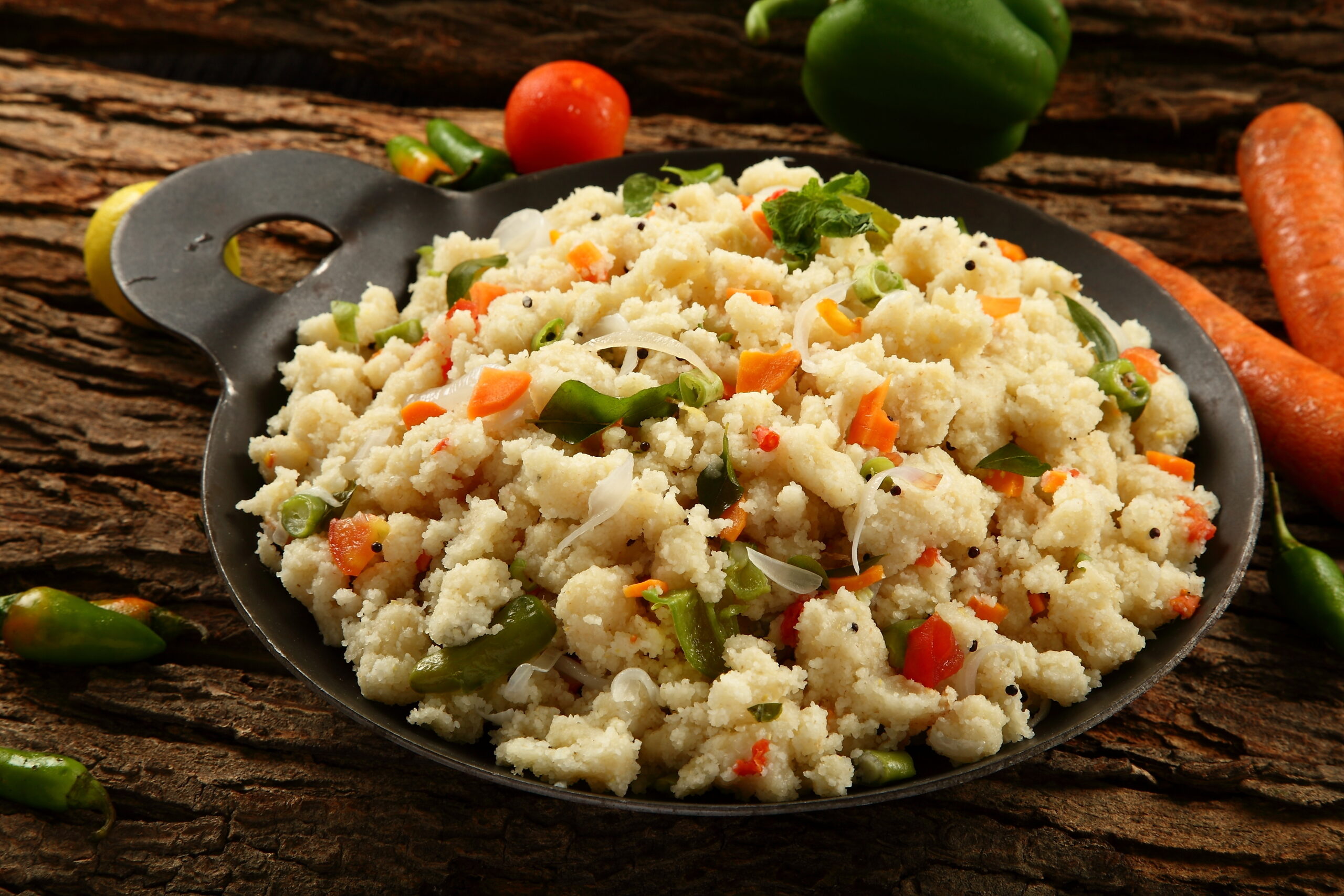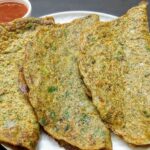
Introduction:
Upma, a traditional South Indian breakfast dish, is a beloved staple that combines simplicity with nutrition. Made from semolina (rava or sooji), Upma is not only easy to prepare but also offers a well-balanced meal rich in protein and essential nutrients. With the flexibility to add various vegetables, nuts, and seeds, Upma becomes an even more nutrient-dense option that can cater to different dietary preferences. This dish is particularly advantageous for those seeking a protein-rich breakfast to fuel their day while maintaining a balanced diet.
Ingredients:
- 1 cup semolina (rava or sooji)
- 2 tablespoons oil or ghee
- 1 teaspoon mustard seeds
- 1 teaspoon urad dal (split black gram)
- 1 teaspoon chana dal (split Bengal gram)
- 1 medium onion, finely chopped
- 1-2 green chilies, chopped
- 1-inch piece of ginger, finely chopped
- 1/4 cup green peas (optional)
- 1/4 cup chopped carrots (optional)
- 1/4 cup chopped bell peppers (optional)
- 8-10 curry leaves
- 2 1/2 cups water
- Salt to taste
- Fresh coriander leaves for garnish
- 1/4 cup roasted peanuts or cashews (optional)
Preparation Process:
- Roasting the Semolina:
Begin by dry roasting the semolina in a pan over medium heat until it turns light golden brown. Stir continuously to prevent burning. Once roasted, set the semolina aside to cool. - Tempering the Spices:
In the same pan, heat oil or ghee over medium heat. Add mustard seeds and let them splutter. Then, add urad and chana dal, and curry leaves. Sauté the mixture until the dals turn golden brown, releasing a nutty aroma. - Sautéing the Vegetables:
Add the chopped onions, green chilies, and ginger to the pan. Sauté until the onions become translucent. Next, incorporate the chopped vegetables like green peas, carrots, and bell peppers. Cook the vegetables for 2-3 minutes until they are tender yet crisp. - Cooking the Upma:
Pour water into the pan and add salt to taste. Bring the mixture to a rolling boil. Gradually add the roasted semolina to the boiling water, stirring continuously to avoid lumps. Lower the heat and cover the pan, allowing the Upma to cook for 3-4 minutes until the semolina absorbs the water and reaches a fluffy consistency. - Garnishing and Serving:
Once the Upma is cooked, turn off the heat and garnish with fresh coriander leaves and roasted peanuts or cashews for added texture and flavor. Serve hot with a side of coconut chutney or a dollop of yogurt.
Nutritional Advantages:
Upma is a nutrient-dense dish that provides a balanced combination of carbohydrates, protein, and healthy fats. The inclusion of semolina as the base ingredient offers a good source of protein and energy, essential for starting the day on a strong note. By adding a variety of vegetables, the dish is enriched with dietary fiber, vitamins, and minerals. The optional addition of nuts like peanuts or cashews not only increases the protein content but also introduces healthy fats, making Upma a satisfying and filling breakfast option.
Conclusion:
Upma is a versatile and nutritious breakfast dish that can be tailored to meet individual dietary needs and preferences. Whether you prefer a simple version or one loaded with vegetables and nuts, Upma provides a protein-rich start to your day. Its easy preparation and adaptability make it a favorite in many households. For those looking to maintain a balanced diet while enjoying traditional Indian flavors, Upma offers the perfect blend of taste and nutrition.
FAQs:
- Can Upma be made in advance and reheated?
Yes, Upma can be prepared in advance and stored in the refrigerator for up to 2 days. Reheat it in a pan with a splash of water to restore its consistency. - Is Upma gluten-free?
Traditional Upma made with semolina is not gluten-free. However, a gluten-free version can be prepared using alternatives like rice flour or millets. - What other ingredients can be added to Upma?
You can experiment with different vegetables like tomatoes, beans, or corn. Spices such as turmeric or black pepper can also be added for extra flavor. - Is Upma suitable for weight loss diets?
Yes, Upma can be a part of a weight loss diet due to its low-calorie content and the inclusion of vegetables. Portion control is key to ensuring it fits within your dietary goals. - How can I make Upma richer in protein?
To boost the protein content, consider adding cooked lentils, tofu, or paneer to the Upma during the cooking process.


